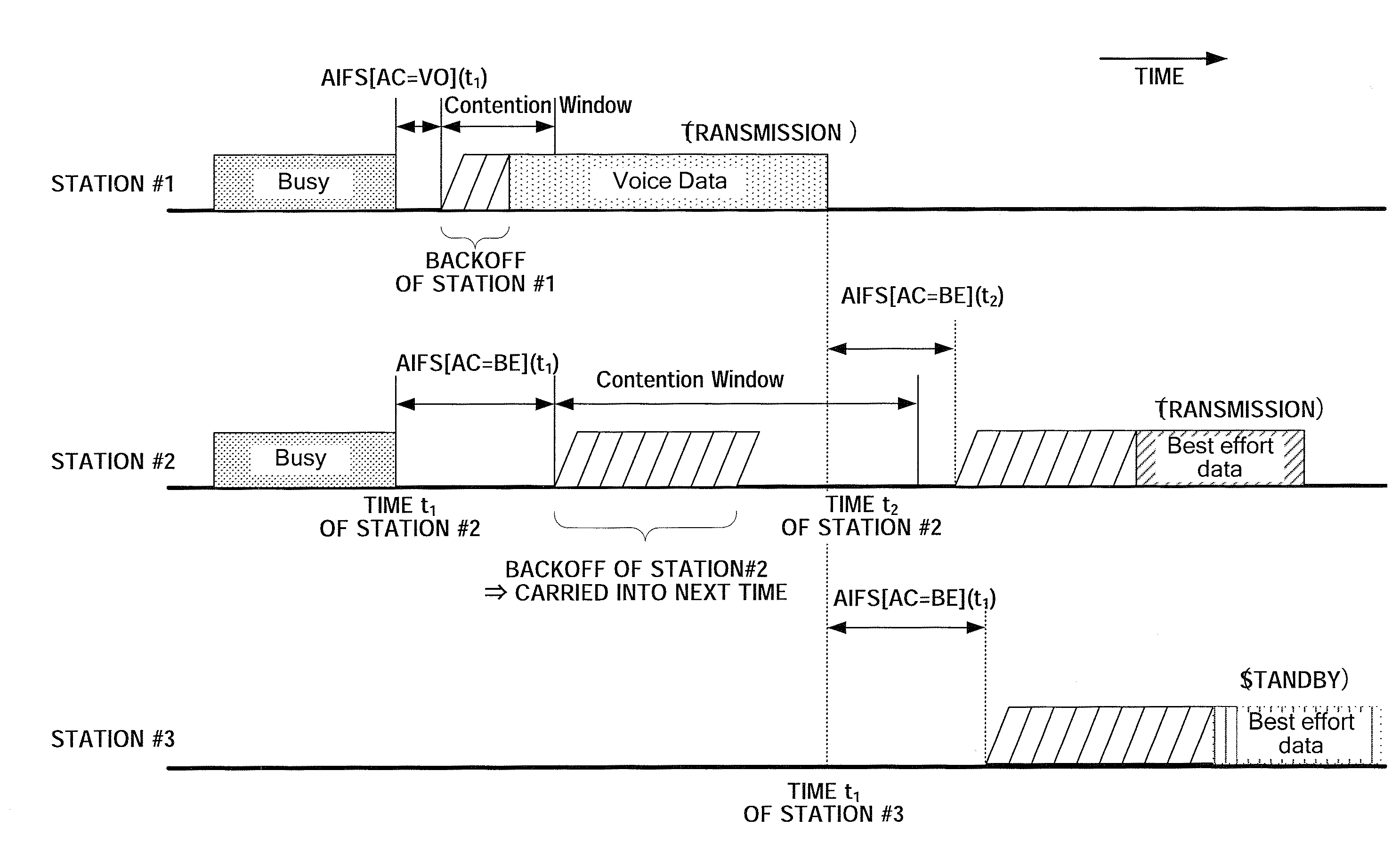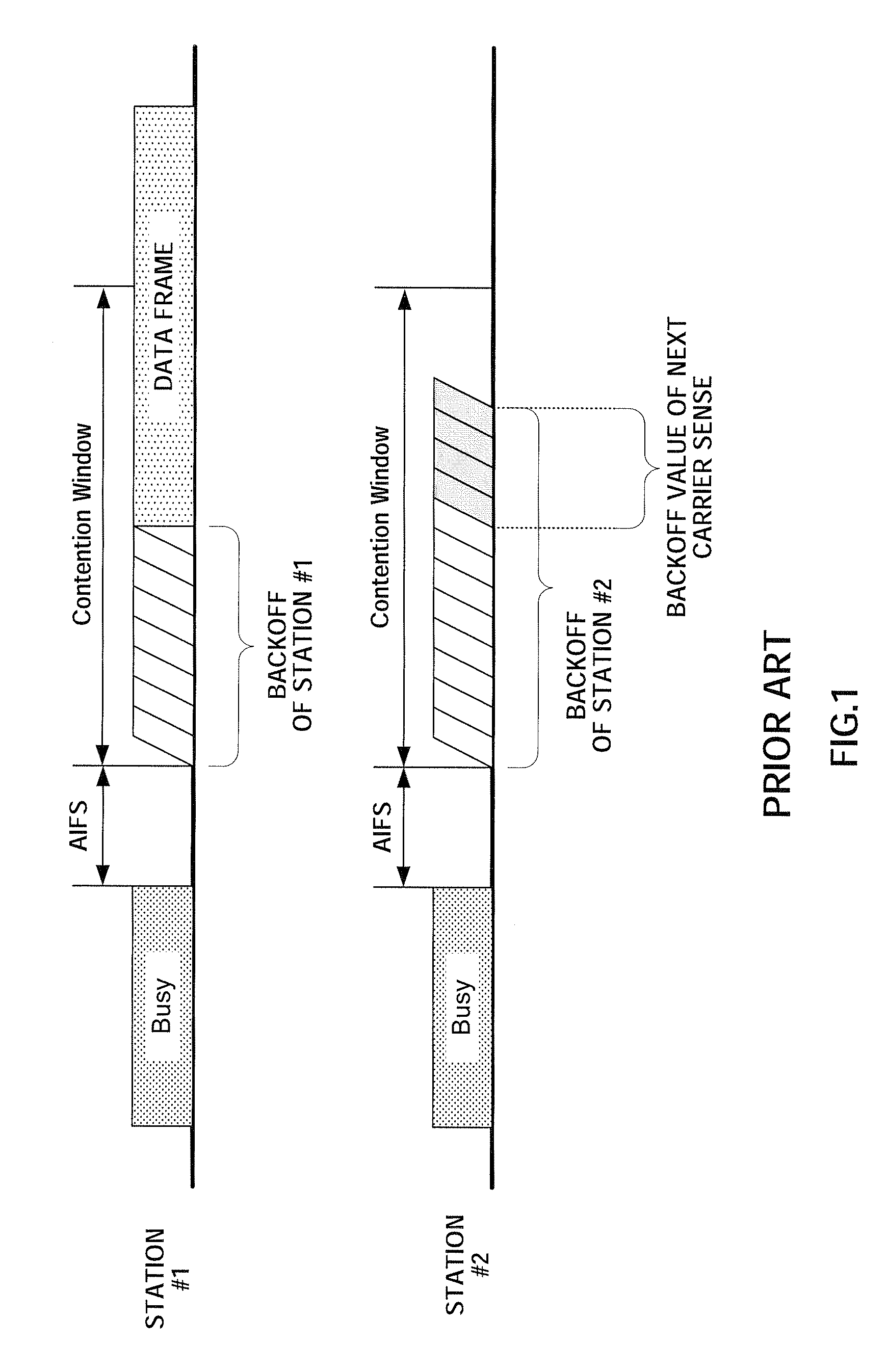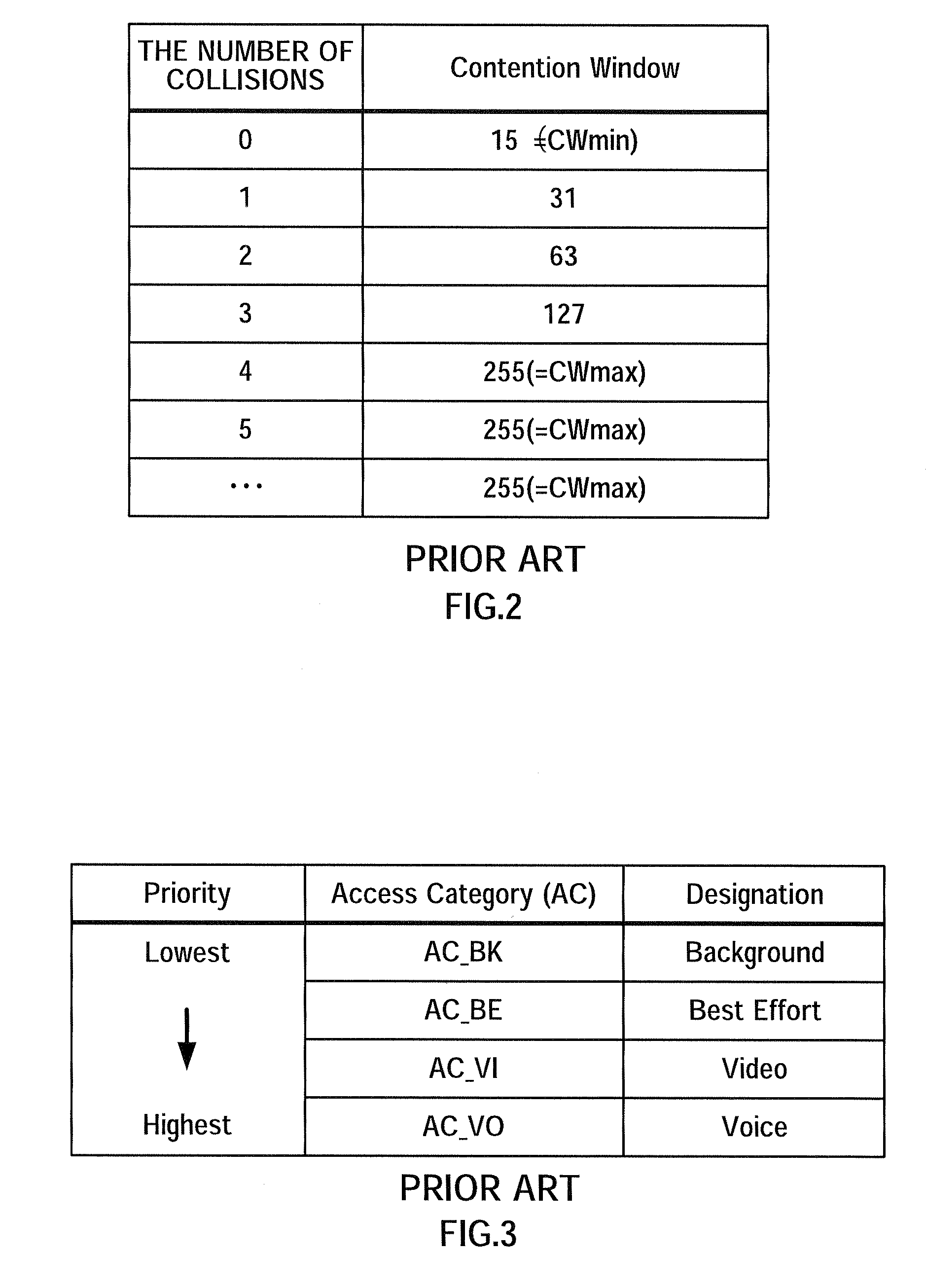Communication Apparatus
a technology of communication apparatus and communication channel, applied in the field of communication apparatus, can solve the problems of increasing the retention window, increasing uncertainty, and unstable communication, and achieve the effect of improving reliability and stability of communication
- Summary
- Abstract
- Description
- Claims
- Application Information
AI Technical Summary
Benefits of technology
Problems solved by technology
Method used
Image
Examples
embodiment 1
[0036]First, a configuration of a station according to this embodiment will be described.
[0037]As shown in FIG. 6, station 100 has: memory 110; coding section 120; OFDM modulation section 130; radio transmission section 140; radio receiving section 150; OFDM demodulation section 160; decoding section 170; and control section 180.
[0038]Memory 110 stores input transmission data, and, according to a transmission permission instruction input from control section 180, outputs the transmission data corresponding to the transmission permission signal as the transmission signal.
[0039]Coding section 120 performs appropriate error correcting coding on the output signal from memory 110, and outputs the coded transmission signal to OFDM modulation section 130.
[0040]OFDM modulation section 130 performs signal processing necessary for OFDM transmission such as interleaving, IFFT and the like on the coded transmission signal, and outputs the OFDM modulated transmission signal to radio transmission...
embodiment 2
[0085]It is a feature of a station of Embodiment 2 that an AIFS value is set in accordance with “the number of retransmissions,” in contrast to station 100 of Embodiment 1 setting an AIFS value corresponding to the “elapsed time.”
[0086]As shown in FIG. 11, station 200 has control section 210. This control section 210 performs transmission control of a transmission signal based on the input RF processed received signal, input received data, and input data type of transmission data.
[0087]More specifically, control section 210 has: AIFS management section 211; contention window management section 212; random backoff selection section213; carrier sense time calculation section 214; carrier sense section 215; transmission permission section 216; ACK detection section 217; and number-of-retransmission counter 218.
[0088]When transmission data is generated, first, a “data type” of the transmission data is input to AIFS management section 211 and contention window management section 212.
[008...
embodiment 3
[0126]It is a feature of a station of Embodiment 3 that the station sets a contention window size in accordance with the “elapsed time” and the number of retransmissions, in contrast to station 1 of Embodiment 1 setting an AIFS value in accordance with the “elapsed time” and further setting a contention window size in accordance with only the number of retransmissions.
[0127]As shown in FIG. 15, station 300 has control section 310. This control section 310 performs transmission control of a transmission signal based on the input RF processed received signal, the input received data, and the input data type of transmission data.
[0128]More specifically, control section 310 has contention window management section 311, random backoff selection section 312, transmission permission section 313, and elapsed-time measurement section 314.
[0129]When transmission data is generated, first, a “data type” of the transmission data is input to AIFS management section 181 and contention window manag...
PUM
 Login to View More
Login to View More Abstract
Description
Claims
Application Information
 Login to View More
Login to View More - R&D
- Intellectual Property
- Life Sciences
- Materials
- Tech Scout
- Unparalleled Data Quality
- Higher Quality Content
- 60% Fewer Hallucinations
Browse by: Latest US Patents, China's latest patents, Technical Efficacy Thesaurus, Application Domain, Technology Topic, Popular Technical Reports.
© 2025 PatSnap. All rights reserved.Legal|Privacy policy|Modern Slavery Act Transparency Statement|Sitemap|About US| Contact US: help@patsnap.com



